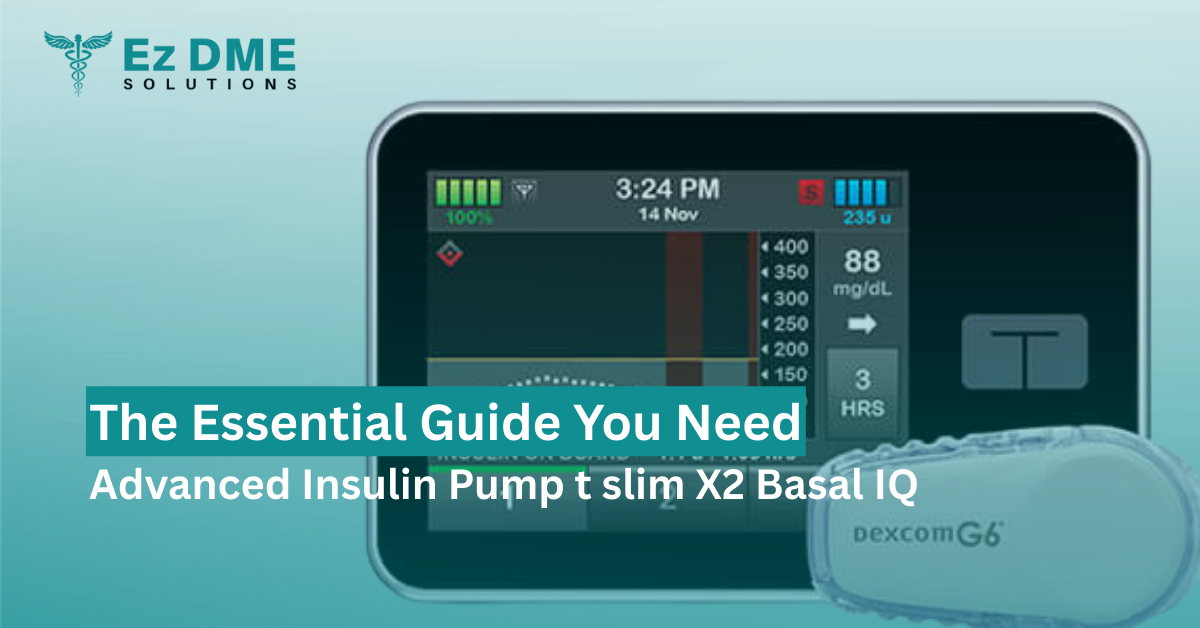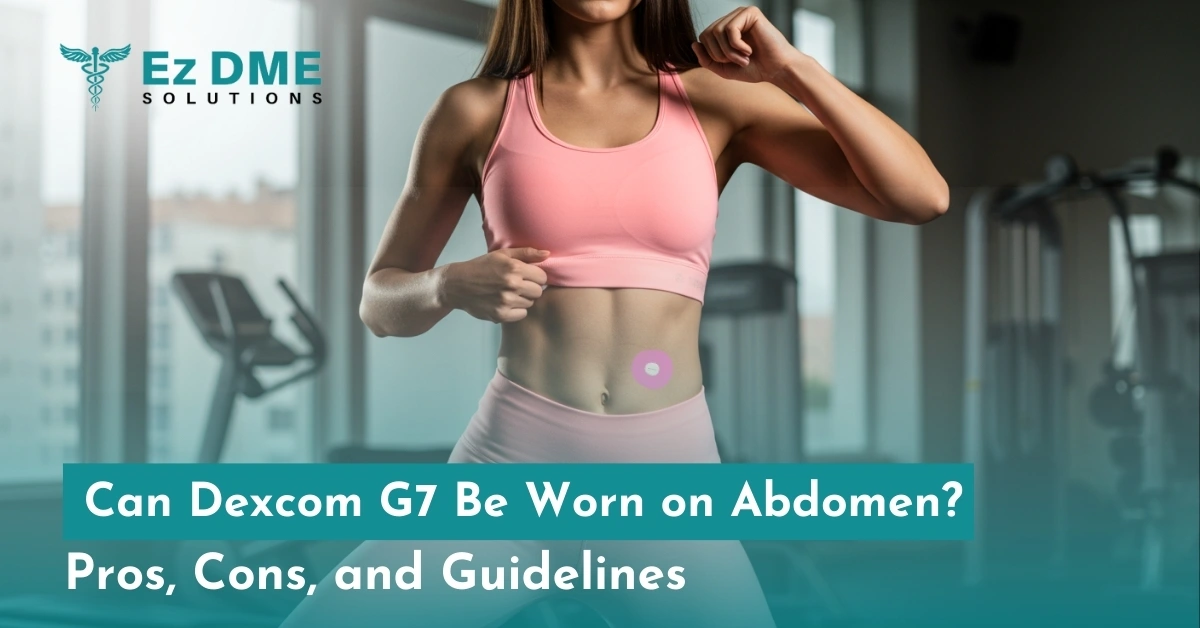No products in the cart.
Dexcom G6 vs G7 Comparison: Features, Accuracy, and Cost
Living with diabetes can be tough, but devices like continuous glucose monitors (CGMs) make it easier to keep track of blood sugar levels. Dexcom is a top brand in this space, and their Dexcom G6 and Dexcom G7 are two popular CGM systems. If you’re wondering about the difference between Dexcom G6 and G7 or deciding whether to upgrade, this guide is for you!
This blog will break down the Dexcom G6 vs G7 comparison in a way that’s easy to understand, covering features, accuracy, design, cost, and more.
What Are Dexcom G6 and G7?
The Dexcom G6 came out in 2018 and changed how people manage diabetes by offering real-time glucose readings without finger pricks. The Dexcom G7, released in 2023, is the newer model with upgrades that make it even more user-friendly. Both devices help people with type 1, type 2, or gestational diabetes stay on top of their blood sugar levels. Let’s dive into the Dexcom G6 vs G7 features to see how they stack up.
Dexcom G7 vs G6 Accuracy: Which Is More Reliable?
Accuracy is super important for CGMs because you need trustworthy glucose readings to make decisions. The Dexcom G6 vs G7 accuracy is measured by something called MARD (Mean Absolute Relative Difference). A lower MARD means better accuracy.
- Dexcom G6: Has a MARD of about 9%, which is pretty good. It gives reliable readings every 5 minutes, but some users say it can be off during fast blood sugar changes.
- Dexcom G7: Boasts a MARD of 8.2% for adults (8.1% for kids), making it one of the most accurate CGMs out there. Its Dexcom G7 sensor performance is improved with better technology, especially for rapid glucose swings.
What Users Say: Many users on the product reviews section note that the Dexcom G7 user experience feels more precise, especially for type 1 diabetics who need tight control. One user said, “The G7 feedback from Type 1 diabetics is amazing—it catches lows faster than my G6 ever did!”
Winner: Dexcom G7 for real-time accuracy and consistency.
Dexcom G6 vs G7 Size and Design: Comfort Matters
When you wear a CGM all day, comfort and size are big deals. Here’s how the Dexcom G6 vs G7 size and Dexcom G7 compact design compare:
- Dexcom G6: The G6 sensor is about the size of a bottle cap and needs a separate Dexcom G6 transmitter that you reuse every 3 months. It’s worn on the abdomen or upper buttocks (for kids).
- Dexcom G7: The Dexcom G7 one-piece sensor is 60% smaller—think three stacked quarters! It combines the sensor and transmitter into one unit, making it sleek and discreet. You can wear it on the upper arm (or upper buttocks for kids ages 2-6). Plus, it’s waterproof up to 2.4 meters.
User Feedback: People love the Dexcom G7 user experience for its low profile. A user on Reddit shared, “I forget I’m wearing the G7—it’s so small!” Reddit Dexcom G7 vs G6 threads also praise the Dexcom G7 compact design for being less noticeable under clothes.
Winner: Dexcom G7 for its smaller, more comfortable design.
Dexcom G6 vs G7 Warm-Up Time and Setup
Setting up a CGM shouldn’t be a hassle. The Dexcom G6 vs G7 insertion process and Dexcom G6 vs G7 warm-up time are key differences:
- Dexcom G6: Takes 2 hours to warm up before it starts giving readings. The setup involves attaching a separate transmitter, which can be tricky for some. It’s a 10-day sensor but has no grace period for replacement.
- Dexcom G7: Has a super-fast 30-minute warm-up time, the shortest of any CGM. The Dexcom G7 setup guide is simple: use the one-button applicator, and you’re done! It’s also a Dexcom G7 10-day sensor but offers a 12-hour grace period to swap sensors without losing data. Plus, Dexcom G7 no calibration, though you can calibrate if you want.
What Users Say: The Dexcom G7 user reviews highlight the quick setup. One user said, “The 30-minute warm-up is a game-changer—I’m back to monitoring in no time!”
Winner: Dexcom G7 for faster setup and easier use.
Dexcom G6 vs G7 Smartphone Compatibility and App
Both CGMs connect to your phone or a receiver to show glucose readings, but the Dexcom G6 vs G7 smartphone compatibility and Dexcom G7 app usability differ:
- Dexcom G6: Works with ios and Android phones, plus insulin pumps like Tandem and Omnipod. It uses two apps: one for your data and another (Dexcom Follow app) for sharing with family or doctors. The Dexcom G6 Bluetooth range is about 20 feet.
- Dexcom G7: Also supports Dexcom G7 iPhone and Android support, but its redesigned app integrates Dexcom Clarity for tracking trends like food and exercise. It uses one app for sharing data, making it simpler. The Dexcom G7 Bluetooth range is similar, but it stores 24 hours of data if your phone is out of range (vs. 3 hours for G6).
- Note: As of 2025, Dexcom G7 and G6 pump integration is limited—G7 isn’t yet compatible with Omnipod 5, though Tandem support is rolling out.
Winner: Dexcom G7 for a better app and connectivity features.
Dexcom G6 vs G7 Cost and Insurance
Cost is a big factor when choosing a CGM. Here’s the cost and insurance coverage of the Dexcom G6 vs Dexcom G7 breakdown:
- Dexcom G6: A 3-pack of sensors (30 days) costs about $449, and the transmitter (~$339) lasts 3 months.
- Dexcom G7: A 3-pack of sensors also costs $567, but there’s no separate transmitter, which saves money over time. Dexcom G7 availability is good, and it’s covered by Ezdme Solutions and many insurance plans.
What to Know: Always check with your insurance for Dexcom G7 price vs G6 details. Is Dexcom G7 covered by Medicare? Yes, for eligible users with a prescription.
Winner: Dexcom G7 for lower long-term costs (no transmitter).
Dexcom G7 Improvements Over G6: Why Upgrade?
The Dexcom G7 improvements over G6 make it a strong choice for many:
- Smaller size (60% smaller, one-piece design)
- Faster warm-up (30 minutes vs. 2 hours)
- Better accuracy (8.2% MARD vs. 9%)
- Improved app with more customizable alerts
- 12-hour grace period for sensor changes
Is Dexcom G7 better than G6? For most users, yes—especially if you want a smaller, easier-to-use device. However, if you rely on Dexcom G7 vs G6 pump integration with Omnipod 5, you might stick with G6 until G7 compatibility is fully available.
Comparison Table: Dexcom G6 vs G7
| Feature | Dexcom G6 | Dexcom G7 |
| Size | Larger, separate transmitter | 60% smaller, one-piece |
| Warm-Up Time | 2 hours | 30 minutes |
| Accuracy (MARD) | 9% | 8.2% (adults) |
| Sensor Life | 10 days | 10 days + 12-hour grace |
| Calibration | Optional | Optional, no calibration needed |
| App | Two apps, basic Clarity | One app, integrated Clarity |
| Pump Integration | Tandem, Omnipod | Tandem (limited), no Omnipod yet |
| Cost | $4,800/year (est.) | Similar, no transmitter cost |
| Wear Location | Abdomen, upper buttocks | Upper arm, upper buttocks (kids) |
What Users Say About Dexcom G7 vs G6
Dexcom G6 vs G7 user reviews show mixed feelings. G6 users love its reliability and pump compatibility, but G7 users rave about the Dexcom G7 user experience. On Product reviews of the website, one user said, “The G7 is so discreet, and the 30-minute warm-up means I’m never without data for long.” Another user missed G6’s pump integration but said, “The G7 feels like the future.”
Dexcom G7 vs G6 discussions often highlight G7’s comfort, but note G6’s edge for pump users.
Which CGM Is Right for You?
Choosing between Dexcom G6 vs G7 depends on your needs:
- Pick Dexcom G6 if you use an insulin pump like Omnipod 5 or prefer a tried-and-true system.
- Pick Dexcom G7 if you want a smaller, faster, more accurate CGM with a better app and lower long-term costs.
Talk to your doctor to see which fits your lifestyle and insurance. You can buy both at the Ezdme Solutions website at very good price.
Final Thoughts
The Dexcom G6 vs G7 comparison shows that both are awesome CGMs, but the Dexcom G7 shines with its compact design, faster warm-up, and improved accuracy. Whether you’re new to CGMs or thinking about upgrading, the G7 offers a more modern experience.





Leave a Reply